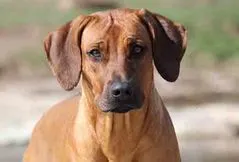
Giant Schnauzer
Smart, stubborn, and an independent thinker, Giant Schnauzer guard dog will play with family and defend them and their home from any threats.
Overall Status
| Height | 23.5 to 27.5 inches |
| Temperament | Loyal, Alert, Trainable |
| Weight | 65 to 90 pounds |
| Life Expectancy | 10 to 12 years |
| Coat Color | Black, Gray |
| Barking Level | Medium |
Quick Factors
| Playfulness | |
| Dog Friendly | |
| Exercise Need | |
| Grooming Needs | |
| Strangers Friendly | |
| Family Affectionate |
Daily Care
Grooming Tips
The Giant Schnauzer’s distinctive look — eyebrows, thick beard, clipped body — doesn’t come naturally. Regular grooming is essential, including brushing, bathing, haircut, nail trim, and ear cleaning. Expect to groom (do it yourself or hire a professional groomer) your dog every six to eight weeks, especially if you wish to keep the coat trimmed short and those eyebrows distinct. Regular brushing every week between stylings will keep the breed’s double coat (outer coat is wiry and hard, and the soft undercoat is dense) in good condition.The owner should be prepared to spend time maintaining the coat or plan to have the dog periodically groomed by the breeder or someone whom the breeder recommends. The Giant’s ears should be checked regularly for signs ofinfection, and theteethshould be brushed often, using a toothpaste formulated for dogs.
Exercise Tips
This is a good dog if you like to exercise and have plenty of space in which to do it. They should be exercised to tire them out so that their calmer personality comes to the forefront. This means taking a dog for a walk for a minimum of 2 hours a day. As previously mentioned, they are also highly intelligent dogs which mean Giant Schnauzers also need a lot of mental stimulation to prevent them from getting bored. A bored dog will get into all sorts of trouble and they will be that much harder to handle which is something to be avoided with such large dogs.
Feeding Tips
If you get a Giant Schnauzer puppy from a breeder, they would give you a feeding schedule and it's important to stick to the same routine, feeding the same puppy food to avoid any tummy upsets. You can change a puppy's diet, but this needs to be done very gradually always making sure they don't develop any digestive upsets and if they do, it's best to put them back on their original diet and to discuss things with the vet before attempting to change it again.Older dogs are not known to be fussy or finicky eaters, but this does not mean you can feed them a lower quality diet. It's best to feed a mature do twice a day, once in the morning and then again in the evening, making sure it's good quality food that meets all their nutritional requirements. It's also important that dogs be given the right amount of exercise so they burn off any excess calories or they might gain too much weight which can lead to all sorts of health issues. Obesity can shorten a dog's life by several years so it's important to keep an eye on their waistline from the word go.Treatscan be an important aid in training, but giving too many can cause obesity. Learn about whichhuman foodsare safe for dogs, and which are not. Check with your vet if you have any concerns about your dog’s weight or diet.
Health Tips
The average life expectancy of the Giant Schnauzer is between 10 and 12 years. This is comparable with the median lifespan of most purebred dogs (10 to 13 years), and most breeds similar in size.Giant Schnauzers are healthy overall, anddedicated breederswill screen for health issues such aship dysplasia, eye disease, and autoimmune thyroiditis. Prospective owners should select a breeder who is a member of theGiant Schnauzer Club of America. GSCA members agree to a code of ethics in breeding and will be the owner’s resource for health information as well as grooming help and tips on Giant Schnauzer care and training.
Trainability
Giant Schnauzers require good training to grow up properly socialized. They are outdoor dogs that need a lot of exercise, so exercise should be included in their training. These dogs need to be raised to understand that other dogs are not a threat and that strangers are not, either. Displaying your status as a pack leader in your dog’s perceived tribe is very important with these dogs, as they can quickly believe that they are the pack leaders without the presence of someone with more discipline than them.The Giant is a “high-energy, protective, territorial guard dog,” says one prominent breed fancier. “The breed is not for the casual owner.” Giants do best with the fenced-in running room, regular exercise, and activities that provide mental and physical exercise. They enjoy and excel in dog sports such as carting,herding,agility,coursing ability tests, andobedience. Earlysocializationandpuppy training classesare a must with this strong, protective breed.
History
The Giant Schnauzer is a separate breed from the Miniature and Standard. Their country of origin is Germany. Breeds were developed for specific work in the 1600's; this breed was developed to be used as drovers of sheep and cattle and as a guard dog. Its coat was also influenced by weather and living conditions.By the beginning of the 20th century, the Giant Schnauzer wasn’t used much for driving cattle, but he still found work at butcher shops, stockyards, and breweries. The dogs were trained for police work, and it is an occupation they have taken to ever since, more often in Europe than the United States.The Giant Schnauzer was recognized by the American Kennel Club in 1930. Today he ranks 94th among the breeds registered by the AKC.






